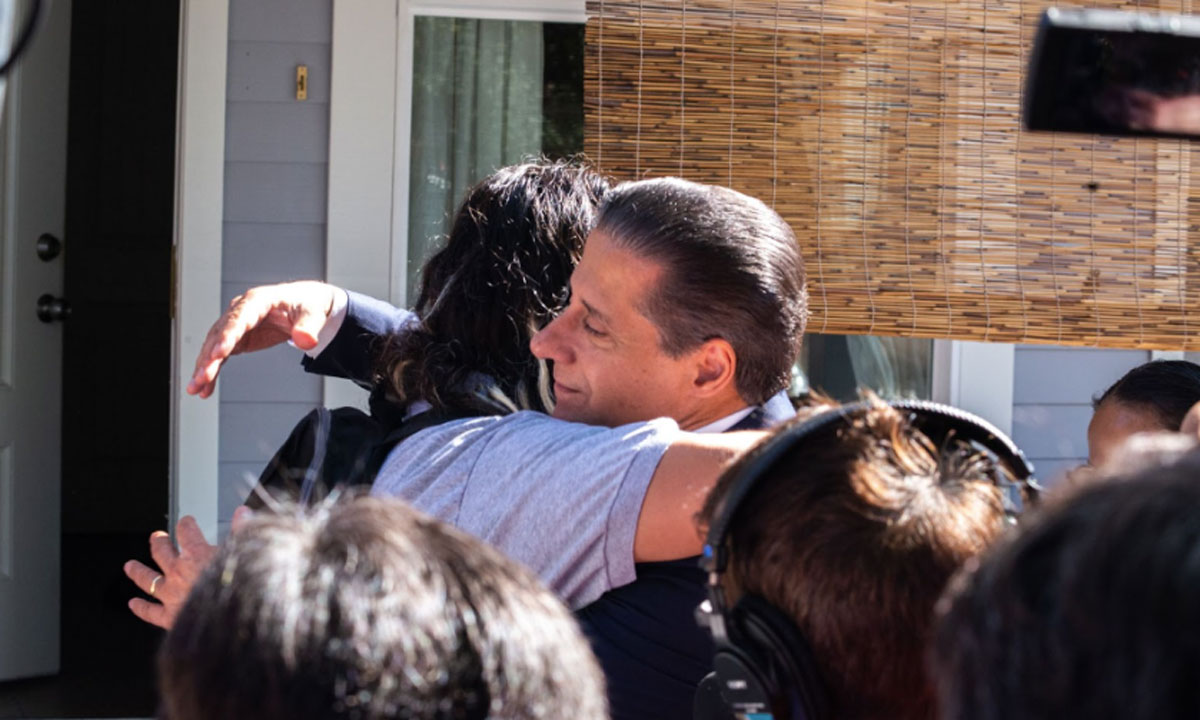Los Angeles Schools Look to Confront Dire Chronic Absenteeism Numbers
Data show more than half of kids in LAUSD Board District 2 were marked chronically absent last year

Get stories like these delivered straight to your inbox. Sign up for The 74 Newsletter
LAUSD Superintendent Alberto Carvalho says attendance at district schools has improved this school year – but one local board district has had a dramatically higher rate of chronically absent students.
In the 2021-2022 school year, 55.4% of students in Board District 2 (BD2) were chronically absent, according to the LAUSD Open Data portal. It was the highest among LAUSD’s seven local districts, higher than the 45.2% of all LA Unified students that were chronically absent that same year.
At a press conference earlier this year, Carvalho said chronic absenteeism has decreased by 10% this academic year.
Schools in BD2 are located in the neighborhoods of East Los Angeles, Boyle Heights, Downtown Los Angeles, El Sereno, and Lincoln Heights, with a predominantly Latino population and low-income families, which community advocates say have been hit harder by the pandemic.
The neighborhoods BD2 serves are still areas with the most reported COVID-19 cases per 10,000 residents in Los Angeles County.
“The data shows that district 2 is in a crisis,” said Maria Brenes, a senior advisor to InnerCity Struggle, an advocacy organization based in East Los Angeles. “I would compel the district to develop an adequate response, to call for a state of emergency.”
Brenes said the lack of affordability in L.A., income inequality, and the housing crisis are ongoing issues that impact these communities. With COVID, shutdowns resulted in the displacement of many families, and some still experience its repercussions.
“Loss of income, loss of loved ones, distance learning, all together directly impacts attendance and engagement,” Brenes said. “Many families feel like they’re on their own, depending on what school their child attends, there’s different levels of support and relationships.”
Many district 2 schools are experiencing staffing shortages and struggling to address the needs of many families.
By comparison, 35.3% of students attending schools in Board District 3, which covers the communities of San Fernando Valley, largely Latino and white populations, were chronically absent last school year.
“We have working class communities, we have foster youth, we have unhoused communities,” said LAUSD Board District 2 member Dr. Rocio Rivas. “The pandemic really allowed the district to really see the vulnerable areas in our communities and how that affects education.”
Rivas and community advocates said that chronic absenteeism is a repercussion of the difficult circumstances surrounding these communities, exacerbated by the pandemic.
“The district has really implemented structures and procedures and tool kits for principals,” Rivas said. “They’re really reaching out and trying to understand the resources and services that communities need.”
Despite ongoing efforts, other factors have also prevented students from attending school. Community advocates have noticed a common pattern among families.
“Some of the biggest challenges we’re hearing from families are around transportation,” said Icela Santiago, the Senior Director of Operations and Strategy at the Partnership for Los Angeles Schools, an in-district partner with LAUSD.
She said that in many instances, when there is just one car in a family, it’s used to go to work, leaving children without access to transportation. Santiago also said that when walking to school doesn’t feel safe, it deters students from attending classes.
Santiago also attributed fear of COVID and general illnesses, especially among elementary students, that have made many parents more inclined to keep their children home. After recovering from an illness, families are also unsure when they should send their children back to school.
iAttend, launched by Superintendent Carvalho in August, is a district-wide effort to address chronic absenteeism across LAUSD. Carvalho said that three iAttend events have been conducted since it began, in which over 9,000 doors were knocked, and thousands of students were brought back to school.
Asked the number of households visited in District 2, an LAUSD spokesperson could not provide the information.
To address the challenges of attending school, community engagement is a priority for Rivas, and organizations like InnerCity Struggle and the Partnership LA.
“Although it’s gone down… we need to re-engage them, so that these students who are engaged, don’t leave once again,” Rivas said.
Since she joined the school board, Rivas said her staff have been researching chronic absenteeism policies and other support systems, and providing information to schools, especially to parents who are unfamiliar with district policies.
Earlier this month, she and her staff visited schools to speak with principals and community representatives, an effort to understand the issues specific to each school
“I’m really looking at community-based partnerships,” she said. “We have a lot of providers… that are connected to families and know more of the circumstances that a lot of the families are facing.”
“If families are not well, then that means their city is not well,” Rivas said, “and that means we have a lot more work to do.”
This article is part of a collaboration between The 74 and the USC Annenberg School for Communication and Journalism.
Get stories like these delivered straight to your inbox. Sign up for The 74 Newsletter

